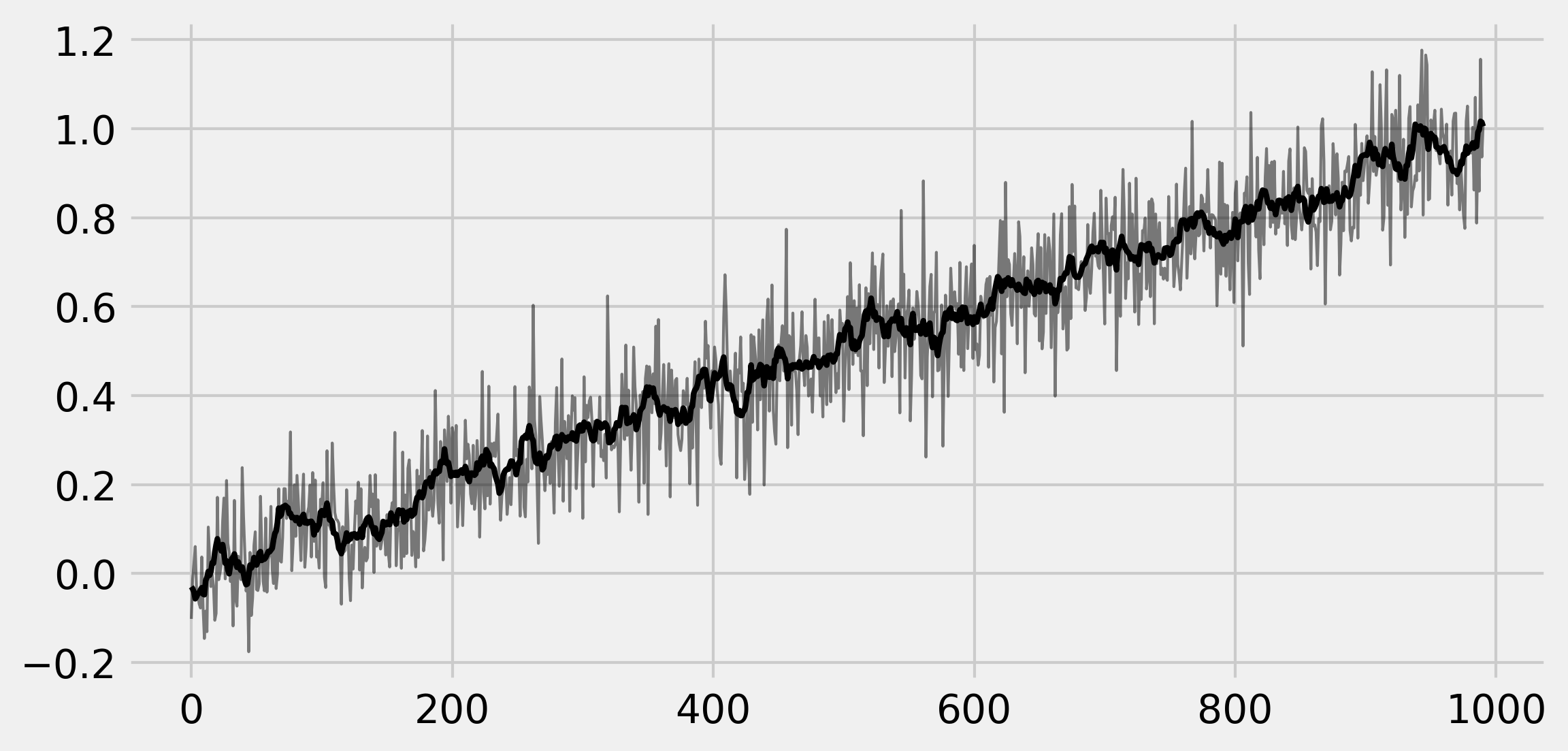Jupyter Snippet CB2nd 07_rolling_average
Jupyter Snippet CB2nd 07_rolling_average
4.7. Implementing an efficient rolling average algorithm with stride tricks
import numpy as np
from numpy.lib.stride_tricks import as_strided
def aid(x):
# This function returns the memory
# block address of an array.
return x.__array_interface__['data'][0]
n = 5
k = 2
a = np.linspace(1, n, n)
ax = aid(a)
as_strided(a, (k, n), (8, 8))
array([[ 1e+000, 2e+000, 3e+000, 4e+000, 5e+000],
[ 2e+000, 3e+000, 4e+000, 5e+000, 9e-321]])
def shift1(x, k):
return np.vstack([x[i:n - k + i + 1]
for i in range(k)])
def shift2(x, k):
return as_strided(x, (k, n - k + 1),
(x.itemsize, x.itemsize))
b = shift1(a, k)
b
array([[ 1., 2., 3., 4.],
[ 2., 3., 4., 5.]])
aid(b) == ax
False
c = shift2(a, k)
c
array([[ 1., 2., 3., 4.],
[ 2., 3., 4., 5.]])
aid(c) == ax
True
n, k = 1000, 10
t = np.linspace(0., 1., n)
x = t + .1 * np.random.randn(n)
y = shift2(x, k)
x_avg = y.mean(axis=0)
import matplotlib.pyplot as plt
%matplotlib inline
fig, ax = plt.subplots(1, 1, figsize=(8, 4))
ax.plot(x[:-k + 1], '-k', lw=1, alpha=.5)
ax.plot(x_avg, '-k', lw=2)

%timeit shift1(x, k)
15.4 µs ± 302 ns per loop (mean ± std. dev. of 7 runs,
100000 loops each)
%%timeit y = shift1(x, k)
z = y.mean(axis=0)
10.3 µs ± 123 ns per loop (mean ± std. dev. of 7 runs,
100000 loops each)
%timeit shift2(x, k)
4.77 µs ± 70.3 ns per loop (mean ± std. dev. of 7 runs,
100000 loops each)
%%timeit y = shift2(x, k)
z = y.mean(axis=0)
9 µs ± 179 ns per loop (mean ± std. dev. of 7 runs,
100000 loops each)